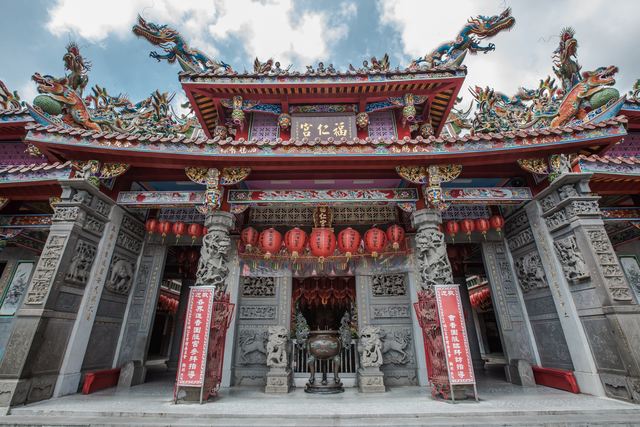Fu Ren Temple Introduction
At the end of Peace Old Street stands a century-old temple, adding a solemn atmosphere to the bustling commercial street. Furen Temple – known as the major temple among locals, was built in the 18th year of Jiaqing (1813). At that time, Zhangzhou immigrants sought to avoid the inconvenience of crossing the Dajia River to Pu-Ding to worship the Kaizhang Shengwang during festivals, so they pooled resources to build the temple with the help of Li Bingsheng (father of Li Tengfang), Lü Banjiao, Lin Benyuan, and others. Today, Furen Temple is not only a significant religious site for Zhangzhou beliefs in Daxi but also hosts deities from Hakka, Teochew, and Quanzhou, which is quite rare. During the Japanese occupation, Furen Temple established a Civil Affairs Bureau as a local base for resistance, and it served as a guard hospital during that period. After undergoing two reconstructions, it is now one of the largest temples in Daxi. Covering an area of over 300 ping, the temple features a three-hall architectural style, with all roofs designed in a false four-sided style, and both the main hall and side rooms are supported by two dragon columns. The height of the main hall is comparable to that of the second-floor rear hall, symbolizing the equality of the main and accompanying deities. The temple courtyard, divided by Peace Old Street, once witnessed children gathering to play spinning tops and locals chatting. Today, it serves as a parking lot and a venue for community activities, still exuding a century-old warmth. If you want to experience local temple activities, the "God Pig Racing" event on the 11th day of the second lunar month is absolutely not to be missed. To celebrate the birthday of Kaizhang Shengwang, ten major surnames take turns presenting a sacred pig, which happens every ten years, making it a significant event for each family. The sacred pig must be decorated with patterns by a professional craftsman and presented at the Furen Temple plaza, with devotees from various places parading through the streets, accompanied by traditional music played with Nanguan drums and lively folk opera performances, creating an extraordinary scene. The century-old "God Pig Racing" event has evolved over time; although it has transformed to feature "creative sacred pigs" made from ingredients like noodle turtles, vermicelli, and oranges, it remains an exciting cultural celebration.


































